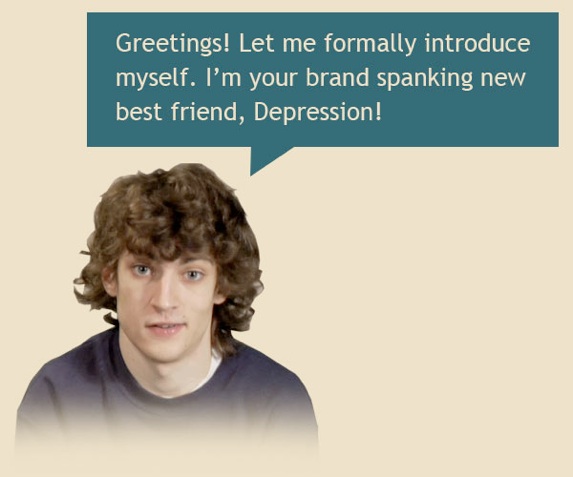Latest Public Service Radio Minute
Loss of EmploymentLoss of Employment, MP3, 1.3MB
Listen to or download all our PSAsSupport Our Work
Please donate so we can continue our work to reduce the stigma of psychiatric illness, encourage research, and support educational activities for behavioral health professionals and the public. Ways you can donate and help are on our Support and Donations page. Thank you!
More InfoLatest News Around the Web
Vast Majority Of Domestic Violence Victims Have Suffered Head Injuries, Study Says
HealthDay (7/10) reports researchers found that “a vast majority of battered women have suffered head injuries that are hard to recover from.” Eighty-one percent of women “who’ve suffered domestic abuse and sought help have suffered a head injury and 83% have been strangled, researchers discovered.” The study was published recently in the Journal of Aggression, Maltreatment & Trauma.
Related Links:
— “Brain Injury Often a Devastating Side Effect of Domestic Violence, ” Robert Preidt, HealthDay, July 10, 2019
Unusual Eating Behaviors May Be Potential Diagnostic Indicator For Autism, Other Disorders, Study Indicates
According to MD Magazine (7/10, Campbell), “unusual eating behaviors, appearing in children as early as one year of age, could be a potential diagnostic indicator for autism and other disorders,” research indicated. In the 2,102-child study, investigators “found that atypical eating behaviors were present in 70% of children with autism, which is 15 times more common than in neurotypical children.” In addition, researchers “found increased rates of atypical eating behaviors in children with” attention-deficit/hyperactivity disorder. The findings were published online and in the August issue of the journal Research in Autism Spectrum Disorders.
Related Links:
— “Unusual Eating Habits as an Early Indicator of Autism, “Patrick Campbell, MD Magazine, July 10, 2019
CDC Data: Drug Overdose, Suicide Rates May Influence Declining US Life Expectancy
CNBC (7/9, Saiidi) reports CDC data indicate for the last three years, the average life expectancy in the US has declined. Data also indicate “the last three years represent the longest consecutive decline in the American lifespan at birth since the period between 1915 and 1918, which included World War I and the Spanish Flu pandemic, events that killed many millions worldwide.” Some factors influencing the decline in life expectancy include increased rates of drug overdose, suicide, and liver disease.
Related Links:
— “US life expectancy has been declining. Here’s why, “Uptin Saiidi, CNBC, July 9, 2019
Most Antidepressant Classes May Be Associated With Reduced Mortality Risk Among People With Both Diabetes And Major Depression, Researchers Say
Medscape (7/9, Tucker, Subscription Publication) reports, “Most antidepressant classes are associated with reduced mortality risk among people with both diabetes and major depression,” research indicated. The study, which included some 50,000 people, revealed “an approximate 35% reduction in deaths over the study period for all antidepressant classes except for reversible inhibitors of monoamine oxidase A.” The findingswere published online in the Journal of Clinical Endocrinology & Metabolism.
Related Links:
— “Antidepressant Use Cuts Deaths by a Third in Those With Diabetes, “Miriam E. Tucker, Medscape, July 9, 2019
Caregiver Depression Associated With A 73% Increase In ED Use Among Patients With Dementia, Research Suggests
Reuters (7/9, Rapaport) reports that patients with dementia “may go to the emergency” department (ED) “more often when their caregivers are depressed,” researchers concluded after observing “663 dementia patients and their family caregivers.” The study revealed that “caregiver depression was associated with a 73% increase in” ED “use among dementia patients.” The findings were published online July 8 in JAMA Neurology.
Related Links:
— “Caregiver depression tied to more ER visits for dementia patients, “Lisa Rapaport, Reuters, July 9, 2019
Foundation News
Nothing Found
It seems we can’t find what you’re looking for. Perhaps searching can help.

